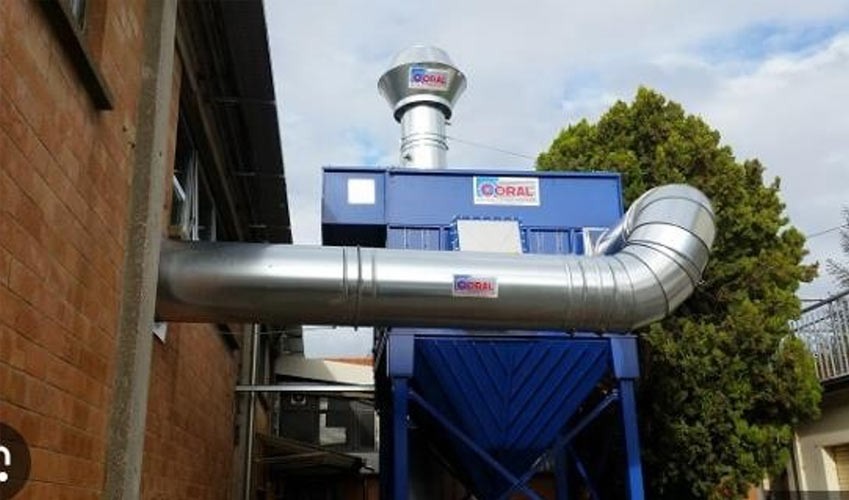Carbon fiber, celebrated for its incredible strength and lightweight nature, has become a game-changer across industries from aerospace to automotive and even sports equipment. While finished carbon fiber products offer impressive durability and ease of handling, the process of working with raw carbon fiber, especially sanding, presents specific safety challenges. This comprehensive Carbon Fiber Sanding Guide is designed to equip you with the essential knowledge and practices to ensure a safe and successful sanding experience. Whether you are refining edges, smoothing surfaces, or preparing for a flawless finish, understanding the nuances of safe carbon fiber sanding is paramount for both your health and the quality of your project.
Why Carbon Fiber Sanding Dust is Hazardous
The very properties that make carbon fiber so exceptional – its strength and fibrous structure – also contribute to the primary hazard: dust. Sanding carbon fiber generates fine particles that can be easily inhaled or come into contact with skin and eyes. These microscopic fibers are not biodegradable and can cause significant irritation and long-term health issues.
Inhaling carbon fiber dust can lead to respiratory problems, including irritation of the airways, coughing, and in the long term, potentially more serious conditions. Skin contact can cause itching, rashes, and irritation due to the abrasive nature of the fibers. Eye exposure is equally concerning, potentially leading to corneal abrasion and irritation. Therefore, minimizing exposure to carbon fiber dust during sanding is not just recommended – it’s essential for your well-being.
Alt text: Safe workspace setup for carbon fiber sanding, featuring ventilation and dust extraction system.
Essential Personal Protective Equipment (PPE) for Sanding
Protecting yourself from carbon fiber dust requires the consistent use of Personal Protective Equipment (PPE). Think of PPE as your first line of defense, creating a barrier between you and the hazardous dust. Here’s what you need for safe carbon fiber sanding:
- Respirator with HEPA Filter: A high-quality respirator is non-negotiable. It should be equipped with a HEPA (High-Efficiency Particulate Air) filter, specifically designed to capture microscopic particles like carbon fiber dust and prevent inhalation. Ensure a proper fit to create a tight seal around your face.
- Safety Glasses or Goggles: Eye protection is crucial. Safety glasses or, even better, goggles will shield your eyes from dust particles and flying debris during sanding. Choose eyewear that provides a snug fit and side protection.
- Disposable Gloves: Wear disposable gloves, preferably nitrile gloves, to prevent direct skin contact with carbon fiber dust and resin. Nitrile gloves are durable and resistant to many chemicals commonly used in composite work.
- Long-Sleeved Clothing: Cover your skin as much as possible. Wear long-sleeved shirts and pants to minimize skin exposure to carbon fiber dust. Disposable coveralls can offer even greater protection, especially for extensive sanding tasks.
Alt text: Essential personal protective equipment for carbon fiber sanding, including respirator, safety goggles, nitrile gloves and long-sleeved clothing.
Step-by-Step Carbon Fiber Sanding Guide
Sanding carbon fiber safely involves more than just wearing PPE. It requires a systematic approach to minimize dust generation and exposure. Follow these steps for a safer sanding process:
- Preparation and Ventilation: Choose a well-ventilated workspace. Ideally, work outdoors or in a workshop with open windows and exhaust fans to ensure good air circulation and remove airborne particles.
- Dust Collection System: Utilize a dust collection system whenever possible. A vacuum cleaner equipped with a HEPA filter is highly effective in capturing carbon fiber dust at the source. Connect the vacuum to your sanding tool if it has dust extraction capabilities.
- Sanding Techniques:
- Wet Sanding: Consider wet sanding as a primary technique to significantly reduce airborne dust. Using water while sanding traps the dust particles, preventing them from becoming airborne. Ensure you are working in a safe environment for wet sanding with appropriate electrical precautions if using power tools.
- Dry Sanding with Dust Extraction: If wet sanding isn’t feasible, use dry sanding with effective dust extraction. Regularly clean your work area and vacuum up dust as it accumulates.
- Grit Progression: Start with coarser grit sandpaper to remove material efficiently and gradually move to finer grits for smoothing and finishing. This reduces the amount of sanding needed overall and minimizes dust generation time.
- Cleaning Up: After sanding, thoroughly clean your workspace. Use a HEPA vacuum to collect dust from surfaces, tools, and clothing. Avoid sweeping or using compressed air, as these methods can redistribute dust into the air. Dispose of used sandpaper, dust collection bags, and disposable PPE properly, sealing them in bags to prevent dust release.
Alt text: Proper carbon fiber material storage in a controlled environment, away from direct sunlight and moisture, emphasizing material safety data sheet compliance.
Beyond Sanding: General Carbon Fiber Safety
While this guide focuses on sanding, remember that safety extends to all stages of working with carbon fiber. Always handle carbon fiber materials with care. Store carbon fiber composites in a controlled environment, away from direct sunlight and moisture to prevent degradation. Consult the Material Safety Data Sheet (MSDS) for specific carbon fiber products you are using to understand potential hazards and safe handling procedures. Proper training and awareness are crucial for anyone working with carbon fiber, ensuring both safety and the successful creation of high-quality composite components.
Conclusion
Mastering carbon fiber sanding involves more than just technique; it demands a commitment to safety. By understanding the hazards of carbon fiber dust, consistently using appropriate PPE, and implementing safe sanding practices, you can protect your health and achieve exceptional results in your carbon fiber projects. Prioritizing safety ensures a sustainable and enjoyable experience when working with this remarkable material.
